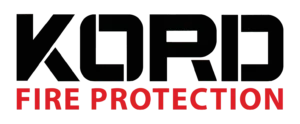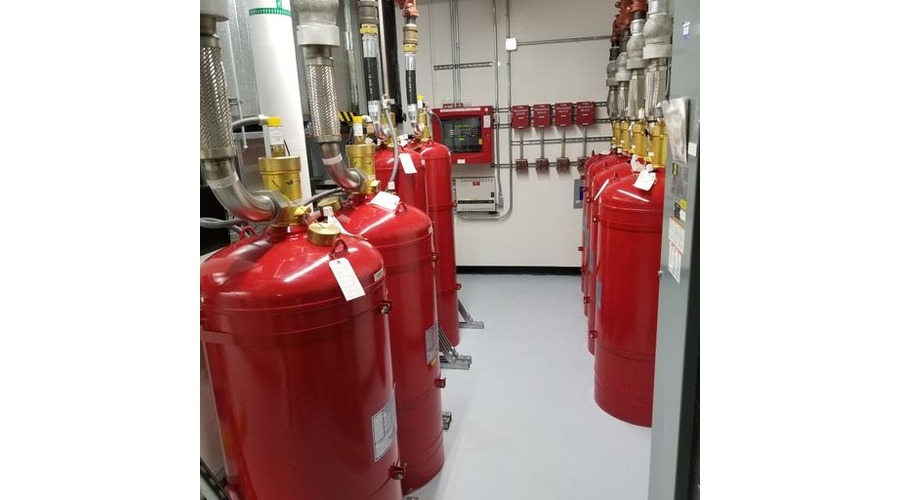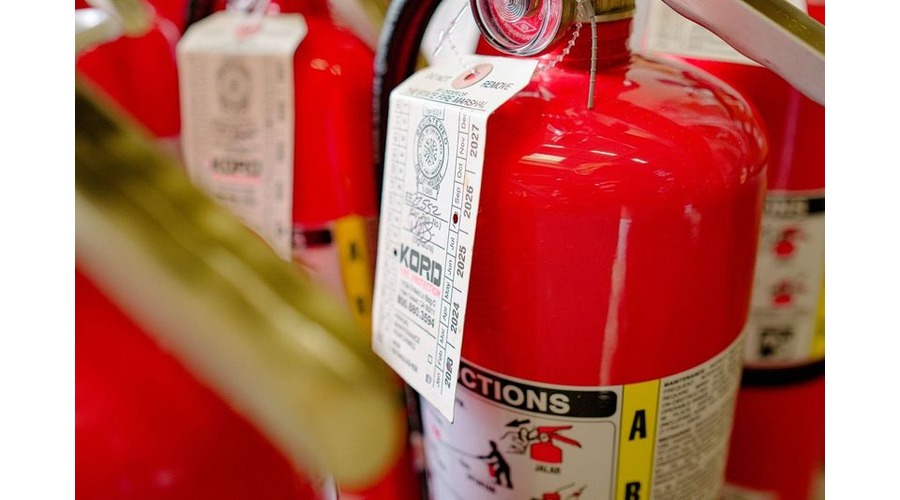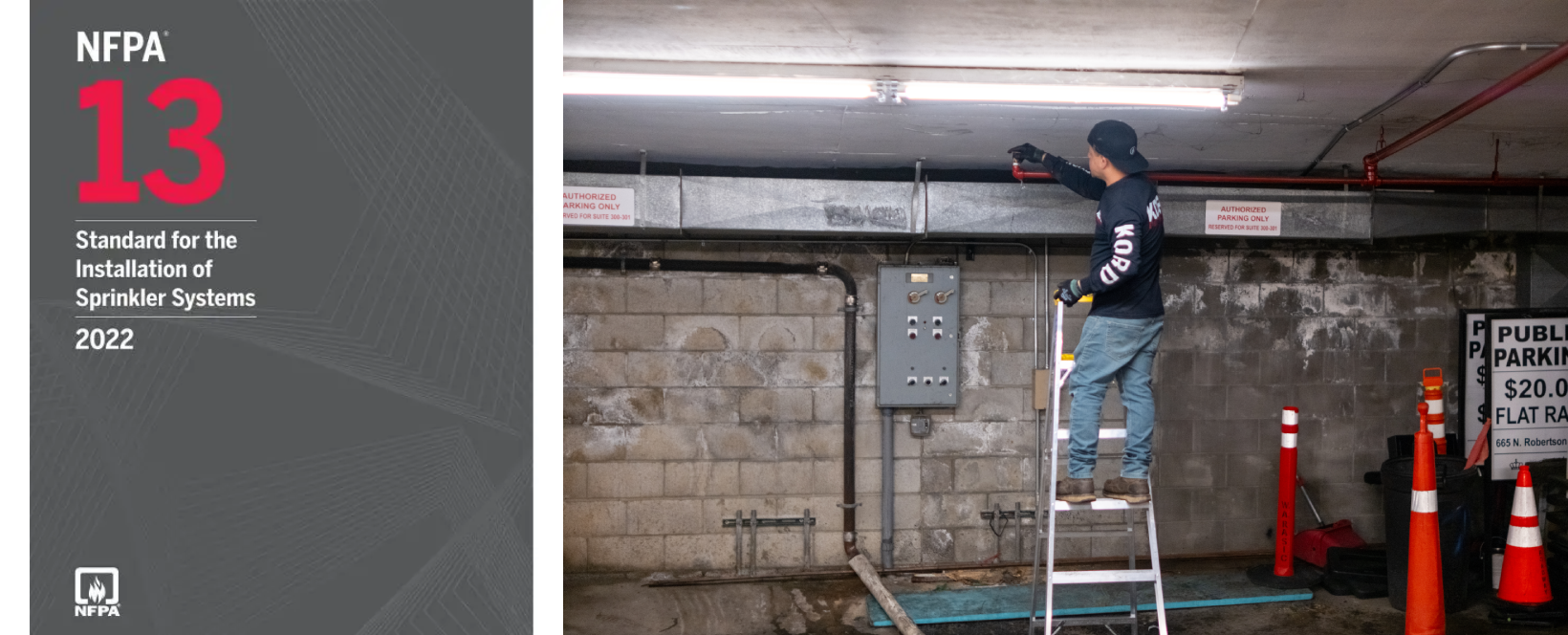

NFPA 13 Overview: Automatic Fire Sprinkler System Installation
What Is NFPA 13?
To overview NFPA 13, it is a widely recognized standard that sets benchmarks for the design and installation of automatic fire sprinkler systems. By ensuring quality control and compliance, NFPA 13 standards aim to minimize the damaging effects of fire. Published by the National Fire Protection Association (NFPA), this standard specifies the minimum requirements for sprinkler system design, installation, and related components.
The NFPA 13 standards cover regulations concerning water supplies, fittings, piping, valves, and service mains. Additionally, NFPA 13 defines various related terms, including fire sprinkler systems and qualified personnel, to ensure a comprehensive understanding of the guidelines and requirements.
What Does NFPA 13 Cover?
NFPA 13 covers the installation of fire sprinkler systems and related components. This includes the installation requirements and locations for automatic sprinkler systems and related components, such as piping, valves, appurtenances, and hanging support. All three types of automatic sprinkler systems—Wet Pipe Systems, Dry Pipe Systems, and Preaction Systems—are covered at length for a wide range of occupancies.
Additionally, NFPA 13 covers various occupancy classifications based on their hazard level: Light, Ordinary, and Extra. Each classification has its own guidelines and requirements regarding fire safety, and these regulations are specifically tailored to each type of occupancy.
A quick NFPA 13 Overview on what is covered under it:
- Fire Sprinkler System Installation Requirements
- Underground Piping Installation Requirements
- Requirements for Installation of Pipings Valves, Fittings, Appurtenances, and Restraints
- System Components
- Location Requirements
- Requirements for Residential, CMSA, and Fast-Response Sprinklers
- Special Sprinkler Requirements
- Storage Requirements
- Official NFPA definitions
The vast amount of information NFPA 13 covers might seem intimidating. Here at Kord, our team of experienced and highly trained technicians are available to walk you through every step. We’ll offer you custom and thorough fire protection that meets your needs and keeps you in compliance with the latest regulations.
NFPA 13 Hazard Classifications
NFPA 13 Hazard Classifications generally fall into one of three categories: Light, Ordinary, and Extra. Light Hazard occupancies are considered to be less combustible than Ordinary or Extra Hazard occupancies and, thus, have a lower expected heat release from fires. Extra Hazard occupancies, on the other hand, are considered highly combustible and pose additional risks that may accelerate a fire.
Buildings classified as Light Hazards include churches, healthcare facilities, offices, and schools. Ordinary Hazards are sorted into two groups. with Group 1 including food processing facilities, mechanical plants, and other manufacturing operations that release moderate rates of heat. Group 2 contains auto repair shops, barns, distilleries, libraries, and machine rooms.
Extra Hazards are also divided into two groups. Group 1 deals with occupancies that contain combustible or flammable liquids but is generally used to classify buildings with highly combustible solids. Group 2, on the other hand, deals with occupancies like automobile paint spray booths, plastic manufacturing operations, and steel manufacturing operations.
What Are The Risks Of Not Adhering To NFPA 13?
NFPA 13 serves as a minimum standard for the installation of Automatic Fire Sprinkler Systems and components. Failing to adhere to these guidelines may be putting your building and the people inside it at risk. Many states and municipalities use NFPA guidelines when constructing their own local codes. NFPA 13 is a widely recognized standard used by fire sprinkler codes and fire protection companies. Some areas, like California, for example, may even expand upon NFPA 13 to fit the state’s fire protection needs.
NFPA 13 vs NFPA 13D vs NFPA 13R
Quick NFPA 13 Overview:
NFPA 13 is written to provide a reasonable degree of protection for both life and property through the proper installation and design of automatic fire sprinklers. The biggest difference between NPFA 13, 13D, and 13R is the scope and type of buildings they cover and, as a result, the requirements. NFPA 13 is the most robust of the three, covering bigger structures than both of the other two standards.
What is NFPA 13D?
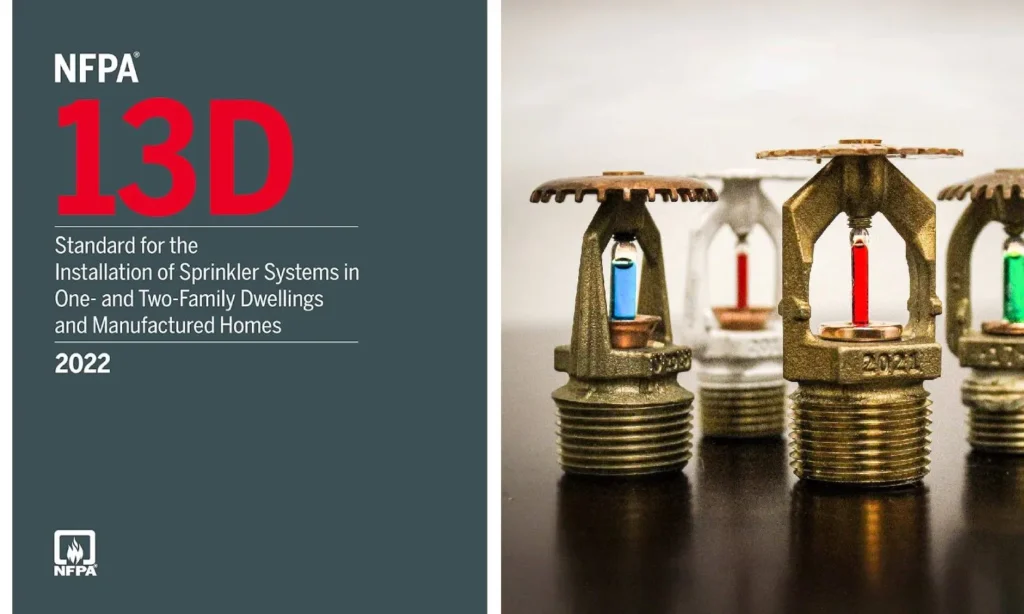

NFPA 13D, established by the National Fire Protection Association (NFPA), governs the installation of fire sprinkler systems in residential settings. This includes single-family homes, duplexes, and mobile homes. These systems aim to provide fire protection for smaller residential units. NFPA 13D specifically enables cost-effective sprinkler systems in dwellings housing two or fewer families.
Key points of NFPA 13D:
- It applies specifically to residential properties like single-family homes, duplexes, townhouses, and mobile homes.
- NFPA 13D systems are generally smaller and less complex compared to commercial or industrial fire sprinkler systems.
- The standard specifies requirements for water supplies, sprinkler types, installation methods, and maintenance procedures.
NFPA 13D Sprinkler Requirements
Requires sprinkler systems in single-family homes, duplexes, and mobile homes. It focuses on providing basic fire protection suitable for smaller residential units. Applies to one- and two-family dwellings, townhouses, and mobile homes. It ensures that these smaller residential units have basic fire protection through the installation of sprinkler systems.
What is NFPA 13R?
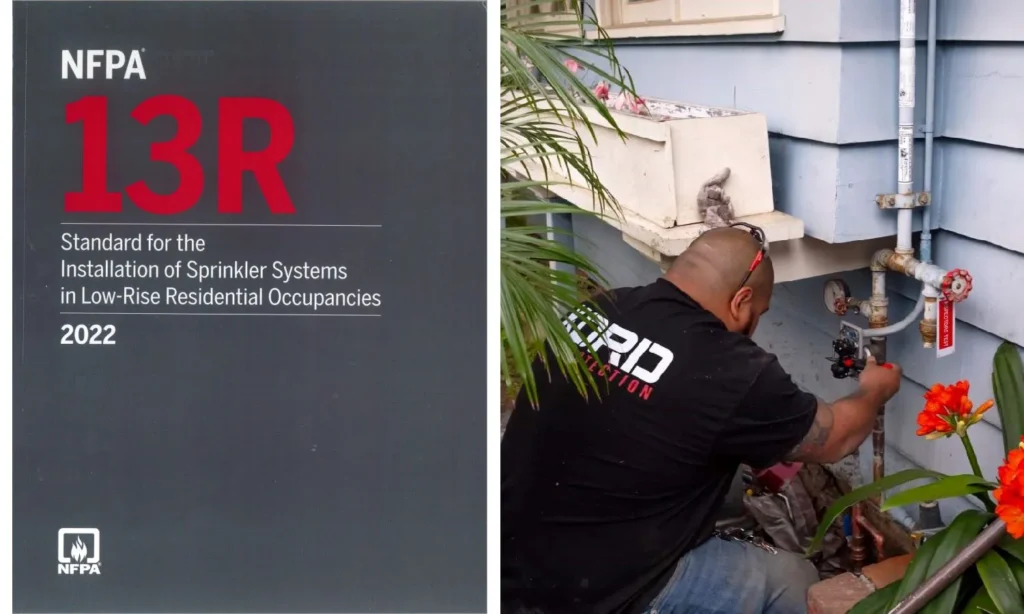

NFPA 13R is an NFPA standard focusing on installing sprinkler systems in larger residential buildings like apartment complexes and other multifamily dwellings. It promotes the use of automatic sprinkler systems in residences with more than two families. NFPA 13R imposes stricter requirements compared to NFPA 13D. Considering higher occupant loads and longer evacuation times in case of fire emergencies.
Key points of NFPA 13R:
- NFPA 13R applies to residential buildings with up to four stories above grade.
- It covers a wider range of residential occupancies compared to NFPA 13D, including apartments, condominiums, and other multifamily dwellings.
- NFPA 13R systems are designed to provide enhanced fire protection for larger residential structures while balancing cost-effectiveness and safety.
NFPA 13R Sprinkler Requirements
Involves more complex systems designed to cover larger areas and multiple residential units within a building. It includes provisions for water supplies, system design, installation, and maintenance tailored to the needs of multifamily residential buildings. Applies to larger residential buildings with up to four stories above grade, such as apartment buildings, condominiums, and other multifamily dwellings. It aims to provide comprehensive fire protection while considering the cost-effectiveness of system installation and maintenance.
NFPA 13D covers one—and two-family dwellings. NFPA 13R, on the other hand, fills in the gap between NFPA 13 and NFPA 13D by covering residential occupancies up to four stories in height. NFPA 13 is the most robust of the three, covering bigger structures than both of the other two standards.
In summary, NFPA 13D and NFPA 13R both regulate the installation of fire sprinkler systems in residential settings. They differ in terms of the types of buildings they cover, the complexity of the systems required, and the specific fire protection goals they aim to achieve.
What’s New In The NFPA 13 2022 Edition?
The 2022 edition of NFPA 13 has undergone some substantial philosophical changes. The standard has moved away from the use of density/area curves, opting instead to use single point density options for new systems. NFPA 13 has also added requirements for nitrogen generators, which were uncovered in previous editions. Additionally, several chapters were modified and updated to include a wide range of new criteria and requirements.
In summary, NFPA 13D and NFPA 13R both regulate the installation of fire sprinkler systems in residential settings, but they differ in terms of the types of buildings they cover, the complexity of the systems required, and the specific fire protection goals they aim to achieve.
You
NFPA 13 Overview FAQS
Are your fire spinkler systems NFPA 13 ready?
NFPA 13 Overview: The NFPA 13 sprinkler system is essential in safeguarding property and saving lives by promptly detecting and extinguishing fires before they can cause extensive damage or harm. If you need to upgrade or maintain your NFPA 13 sprinkler system, don’t hesitate to give us a call!
